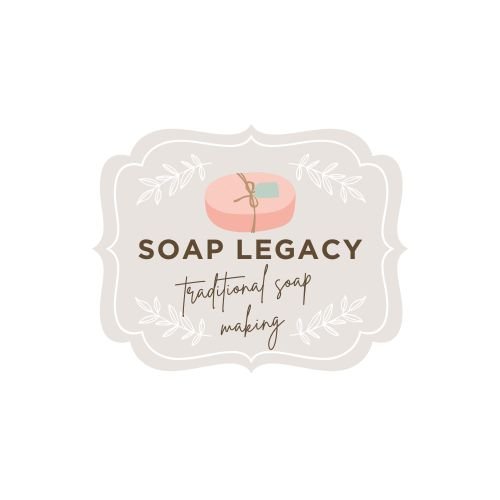Professional soapmakers use five key methods to size batches accurately: Precise lye calculations, percentage-based formulation for easy scaling, the parts method for intuitive ratio management, mold capacity calculation to prevent overflow, and density-adjusted measurements for consistency. You'll get better results by starting with small test batches (around 8 ounces of oils) and scaling up once you're confident. These techniques will transform your homemade soap from unpredictable to professional-quality every time.
5 Pro Methods For Sizing Your Soap Batches

When you're ready to move beyond basic soapmaking, properly sizing your batches becomes an essential skill for consistent results.
Always use a lye calculator to determine the correct oil weights based on your desired yield, ensuring accurate measurements for successful saponification.
Precision with lye is non-negotiable—every gram matters when ensuring your handcrafted soap achieves perfect chemistry.
For experimentation, start with test batches of about 8 ounces (1/2 pound) of oils before scaling up.
Adopt the parts system for flexible recipes—a ratio like 2 parts coconut oil to 1 part olive oil allows for easy adjustments while maintaining soap properties.
Ready for large batch production?
Shift from single loaf molds to large block molds to increase efficiency by 5-10 times.
Remember to keep total recipe percentages at 100% and adjust superfat levels according to your personal preference and the essential oils used in your formulation.
Percentage-Based Formulation for Flexible Scaling
Among professional soapmakers, percentage-based formulation stands out as the most versatile method for batch sizing. When you work with percentages instead of fixed measurements, you'll maintain consistent ratios regardless of your total amount of oils, ensuring balanced handcrafted soap every time.
For example, if your recipe calls for 30% palm oil, 30% coconut oil, 30% olive oil, and 10% sweet almond oil, you can easily scale to any batch size while preserving these proportions.
Adding specialty ingredients becomes straightforward too—a 3% green tea extract in a 4 oz base requires just 0.12 oz (about 3.5 ml).
This approach simplifies recipe adjustments since you can recalibrate ingredient percentages while ensuring they total 100%.
You'll gain flexibility to experiment with different oils while maintaining your soap's fundamental structure.
The Parts Method for Simple Ratio Management

While percentage-based formulations offer precision, the parts method provides an even more intuitive approach to soap recipe management. This system lets you designate specific "parts" to each ingredient, making scaling your soap production effortless.
For example, a recipe with 2 parts coconut oil and 1 part olive oil means coconut oil represents two-thirds of your total oil weight. With a 30-ounce batch, you'd use 20 ounces of coconut oil and 10 ounces of olive oil.
You can easily adjust ingredient ratios by simply changing the number of parts without recalculating percentages.
- Feel the liberation of creating any size batch without complex math
- Experience the satisfaction of consistent results every time you craft
- Enjoy the confidence of knowing your ratios are always perfectly balanced
Mold Capacity Calculation for Perfect Fits
A perfect soap batch starts with knowing your mold's exact capacity. To calculate volume, multiply your mold's length, width, and height in inches. For example, a 10" × 4" × 3" mold holds 120 cubic inches.
Success begins with precision—know your mold's capacity before mixing oils and lye for perfectly sized soap batches.
Convert this measurement to fluid ounces by multiplying by 0.55411—that 120 cubic inch mold holds about 66.5 fluid ounces. Remember that soap batter density (typically 0.9-1.1 g/ml) affects actual yield.
When scaling oils and lye for different molds, guarantee your total recipe weight matches your calculated capacity. If your recipe calls for 40 ounces but your mold holds 66 ounces, you'll need to adjust recipe quantities proportionally.
Don't forget to account for additives that increase volume—colorants, exfoliants, and fragrance oils all take up space and can cause overflow if overlooked.
Density-Adjusted Measurement for Precision Results

Now that you've mastered mold capacity, let's focus on ingredient precision itself. When making soap, your batch quality depends on accurate measurements that account for density variations.
Those palm oil measurements on your recipe? They're probably wrong if you're using volume instead of weight. Density-adjusted measurements guarantee your soap recipes maintain perfect consistency every time.
For precise results:
- Use a digital scale to weigh all ingredients—even a 5% measurement error can transform your luxurious creation into an unusable disaster.
- Remember that 1 fluid ounce ≠ 1 weight ounce—palm oil's 0.89 g/ml density means significant differences in your final product.
- Convert weight measurements to volume using specific ingredient densities when necessary—especially critical for essential oils and fragrances.
Your artisan-quality soap demands this level of precision. Don't compromise your craft.
Frequently Asked Questions
How to Calculate Soap Batch Size?
To calculate soap batch size, you'll determine your desired yield, calculate each oil percentage from your recipe, multiply by your total weight, and verify all ingredients total 100%. Don't forget to confirm with a lye calculator.
How Do I Scale My Soap Business?
To scale your soap business, invest in larger molds and equipment, implement masterbatching techniques, use floor scales for measuring, optimize inventory tracking, and improve cash flow management. You'll increase production efficiency while reducing labor costs.
How to Measure Soap Size?
Weigh your soap ingredients with a digital scale for precise measurements. Use a lye calculator to determine exact amounts based on your oil weight. Always document your measurements to maintain consistency in future batches.
How Many Bars of Soap Does 10 Lbs Make Per?
A 10-pound batch will yield 32-40 bars if you're making standard 4-5 ounce bars. You'll get about 29 bars for 5.5-ounce sizes. Remember, final counts may vary due to water content and curing shrinkage.
In Summary
You've now mastered five professional approaches to sizing your soap batches. Whether you're using percentages for scaling, the parts method for simplicity, calculating mold capacity, or adjusting for density, you'll create perfectly sized batches every time. Apply these techniques to streamline your production, reduce waste, and maintain consistency. Soon you'll be creating professional-quality soaps with confidence while saving both time and valuable ingredients.





Leave a Reply